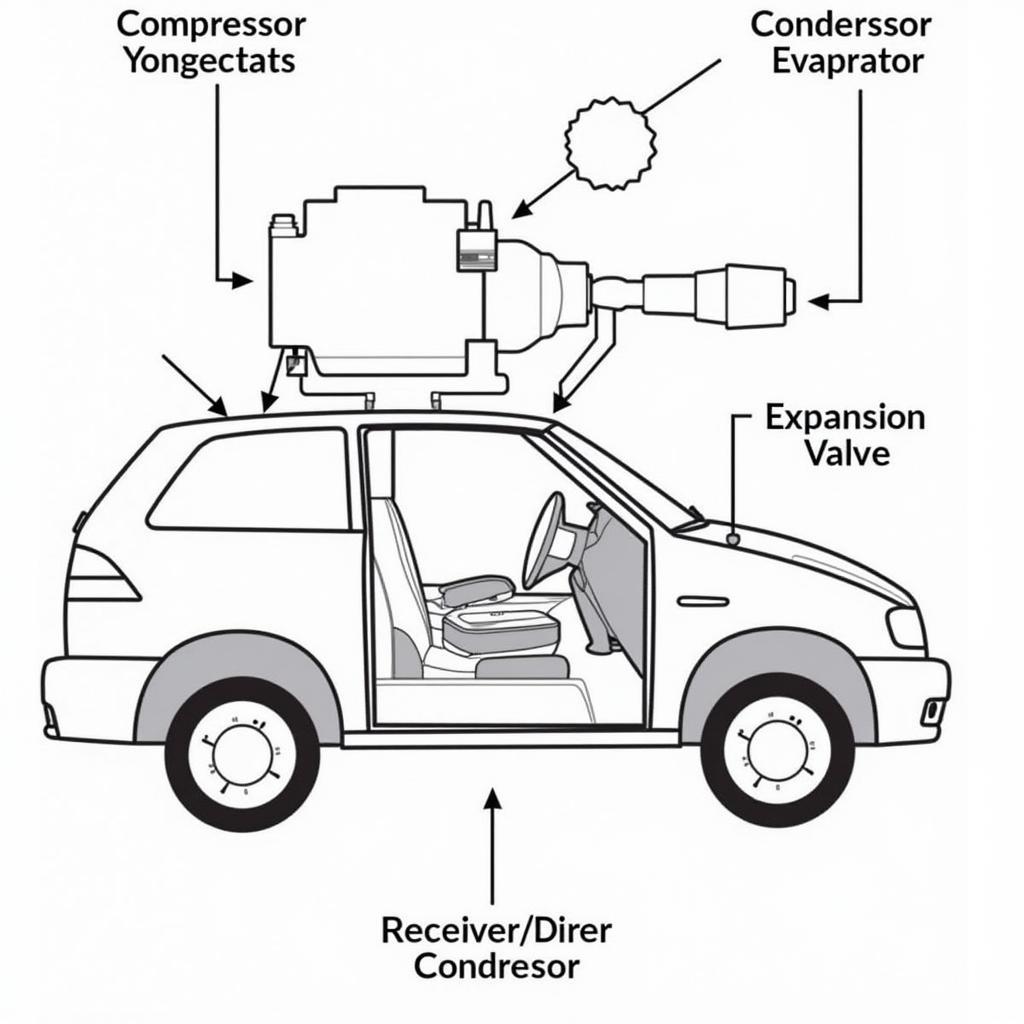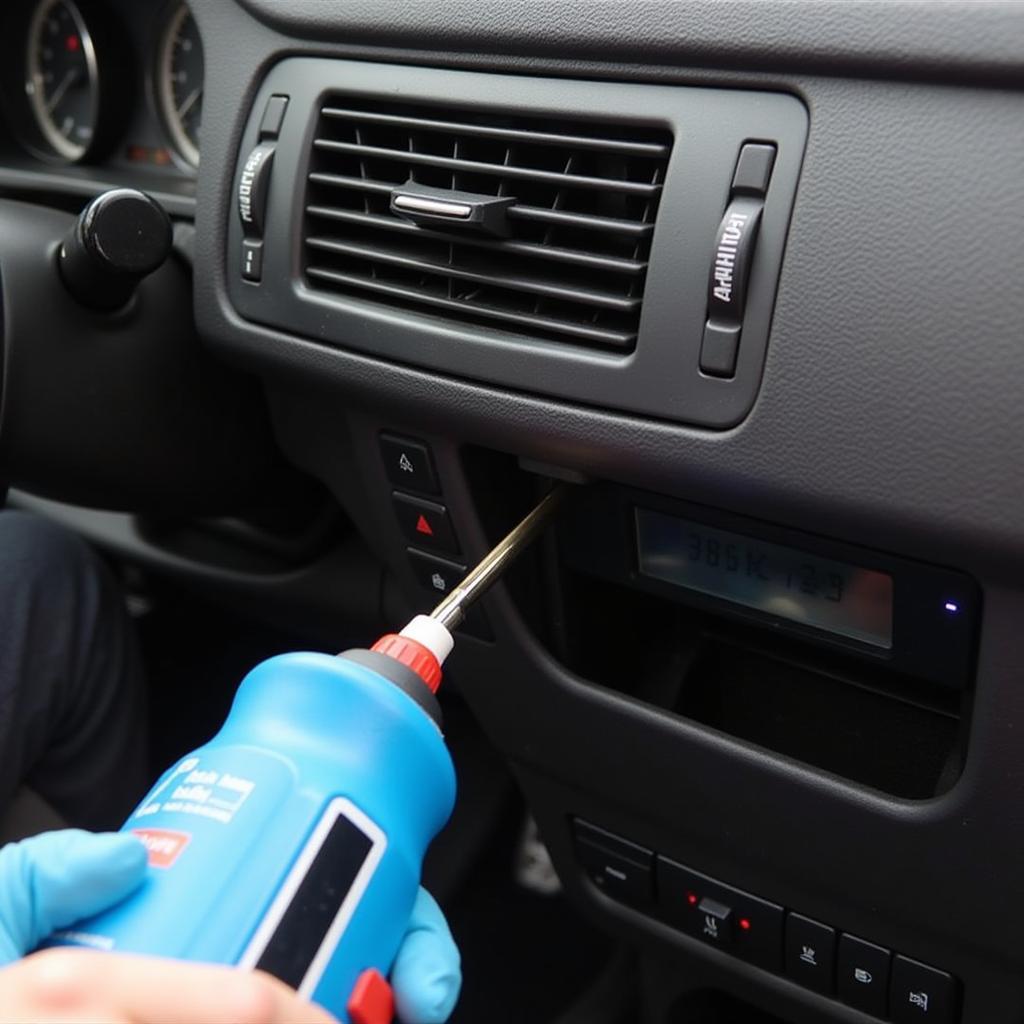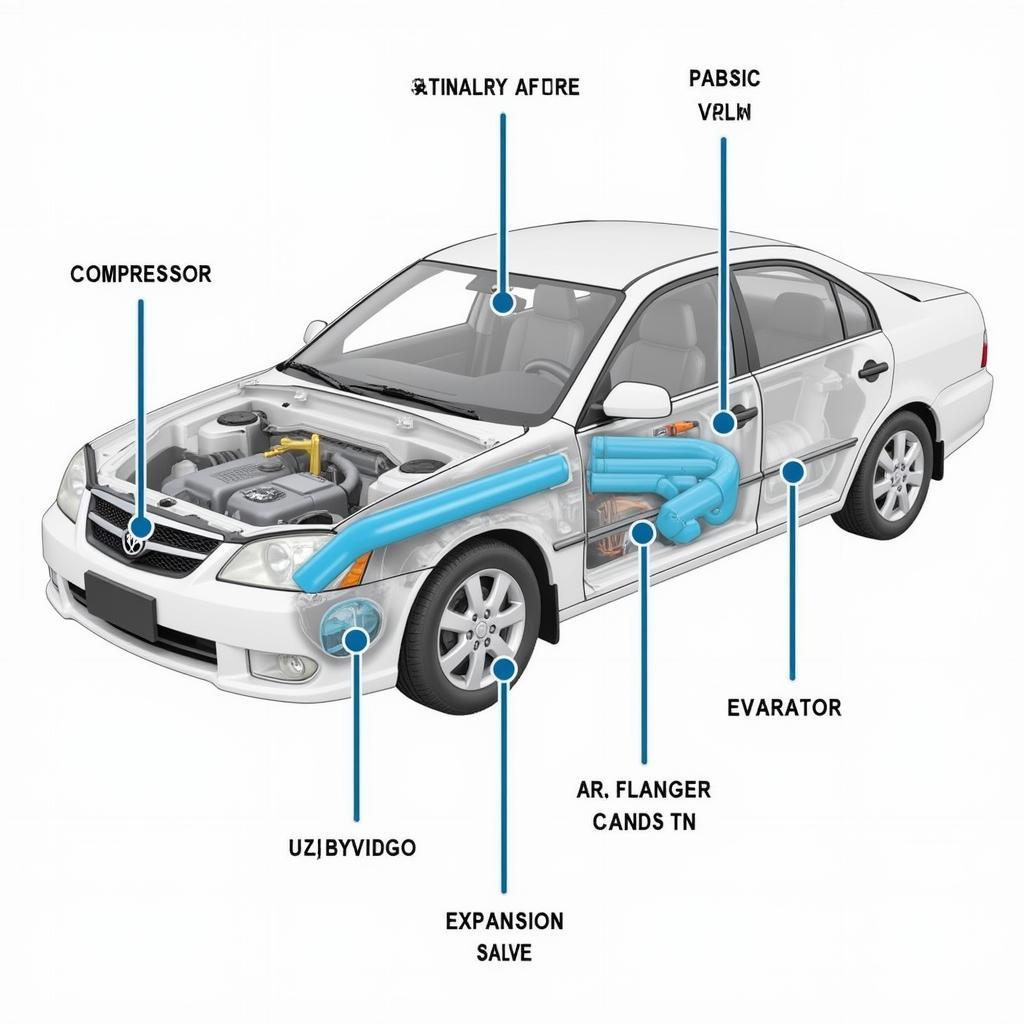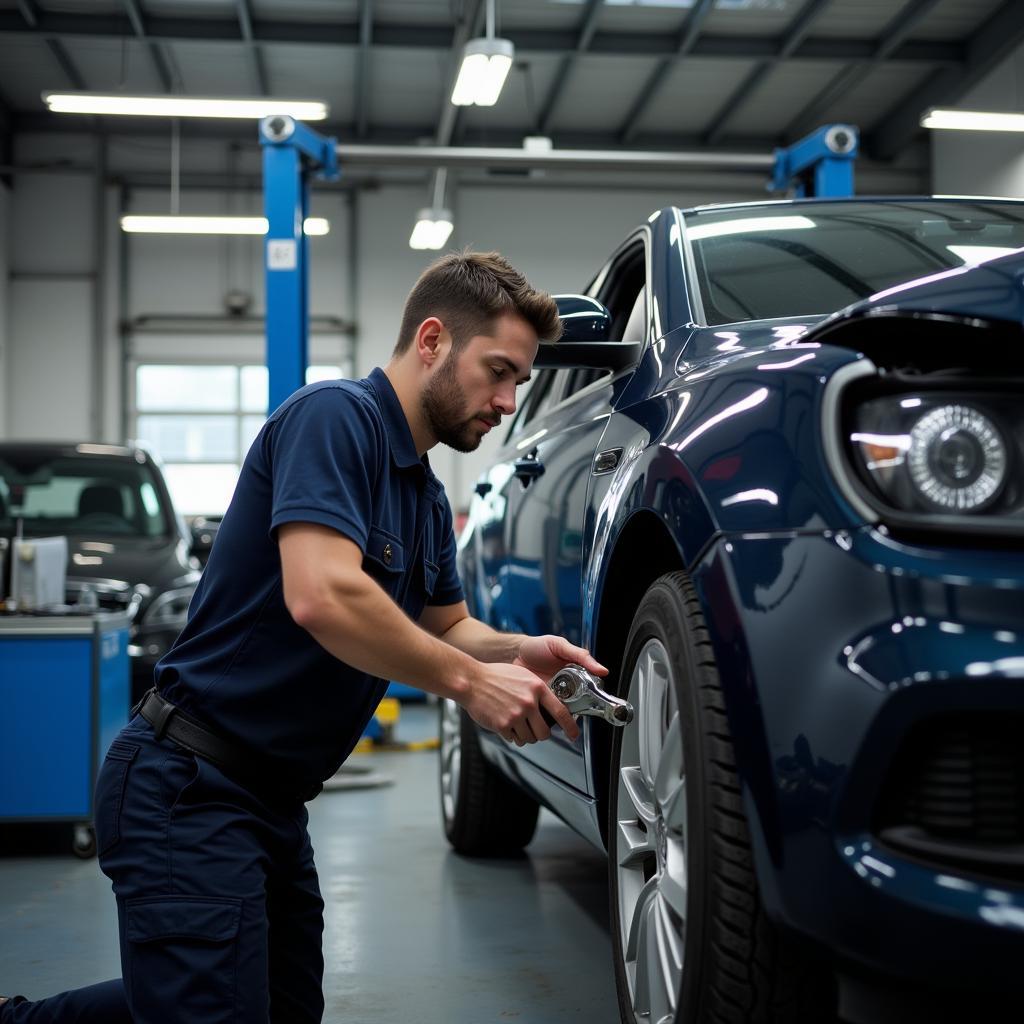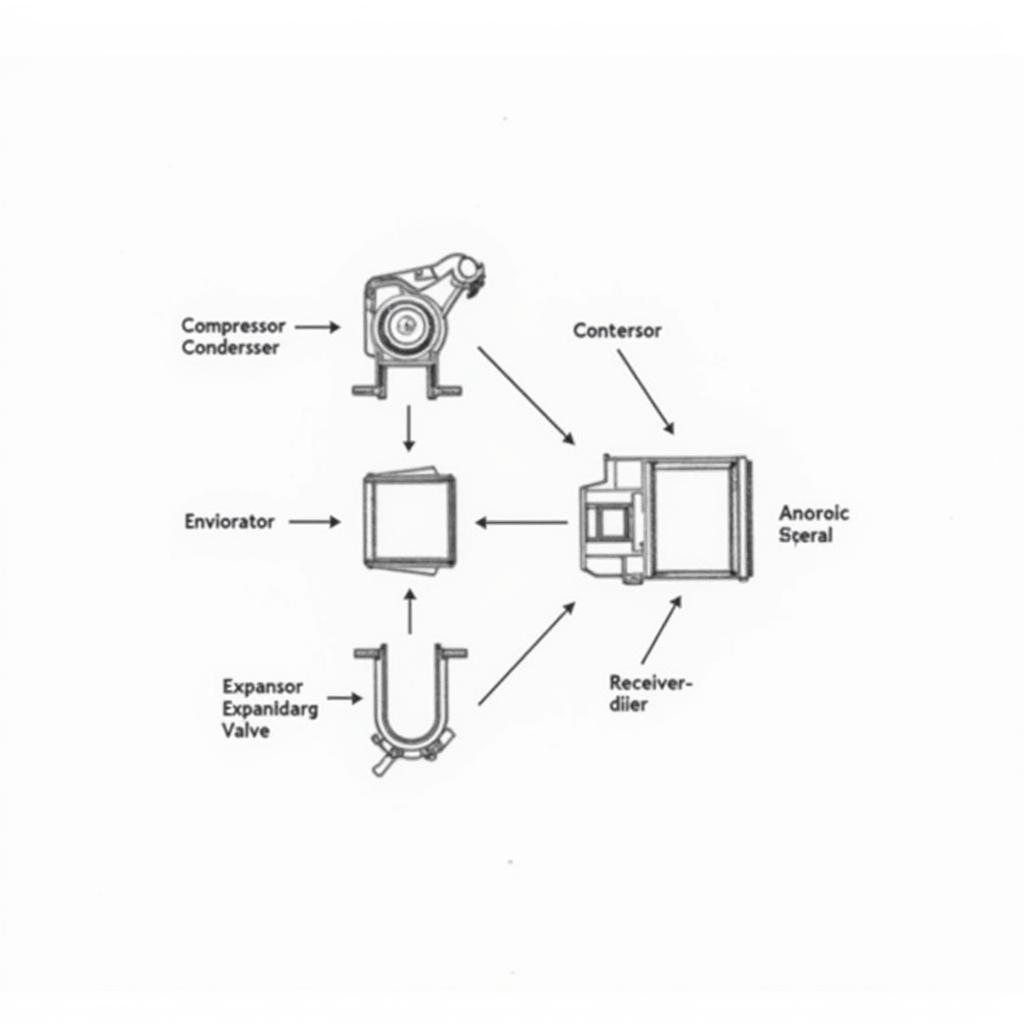
Car AC System Components Diagram
Do It Yourself Car Air Conditioning Repair can seem daunting, but with the right knowledge and tools, it’s often possible to diagnose and fix minor AC issues yourself. This guide will provide you with valuable information, troubleshooting tips, and step-by-step instructions to help you tackle common car AC problems. Remember, working on your car’s AC system involves handling refrigerants and specialized components, so proceed with caution.
Understanding Your Car’s AC System
Before attempting any do it yourself car air conditioning repair, it’s crucial to understand the basic components and how they work together. The main parts include the compressor, condenser, evaporator, expansion valve or orifice tube, and receiver-drier. The compressor pumps refrigerant through the system, the condenser cools and condenses the refrigerant, the evaporator absorbs heat from the cabin air, and the expansion valve or orifice tube regulates refrigerant flow. The receiver-drier removes moisture from the system. A malfunction in any of these components can lead to a less-than-optimal cooling performance.
Did you know that a low refrigerant level is the most common cause of poor AC performance? It’s often a simple fix with a DIY AC recharge kit. However, it’s important to identify the source of the leak before recharging.
 Car AC System Components Diagram
Car AC System Components Diagram
Diagnosing Common AC Problems
Several issues can affect your car’s AC. Identifying the problem is the first step in a successful do it yourself car air conditioning repair. Is your AC blowing warm air? This could be due to low refrigerant, a faulty compressor, or a blocked condenser. If the AC is making strange noises, it might indicate a problem with the compressor clutch or a worn-out bearing. A leak in the system can also lead to poor cooling. Do you smell something unusual? A musty odor could point towards mold growth in the evaporator.
Checking the fuses and relays related to the AC system is also a good starting point for any do it yourself car air conditioning repair.
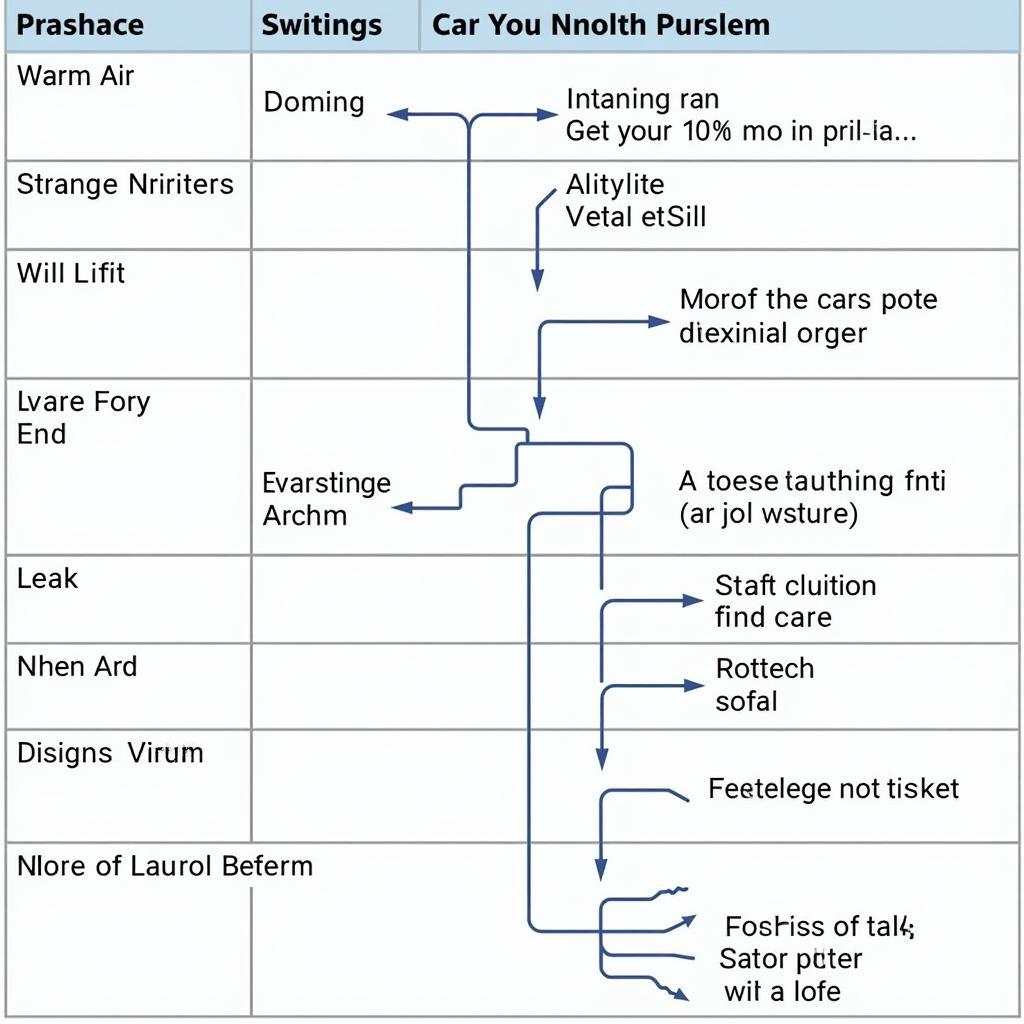 Car AC Troubleshooting Chart
Car AC Troubleshooting Chart
Do It Yourself Car Air Conditioning Repair: Step-by-Step Guides
Some AC repairs can be tackled at home. For example, recharging the refrigerant with a do it yourself air conditioning repair car kit is a relatively simple process. However, it’s vital to follow the instructions carefully and use the correct refrigerant type for your vehicle. Replacing a cabin air filter is another easy DIY task that can significantly improve airflow and reduce odors. More complex repairs, such as replacing a compressor or other major components, are best left to professionals.
Looking for reliable car AC repair services in Bedford? Check out car air conditioning repair bedford.
Recharging Your Car’s AC
- Gather your supplies: You’ll need an AC recharge kit, safety glasses, and gloves. Consider an air conditioning repair kit for cars that includes a gauge and sealant.
- Locate the low-pressure service port: This is typically a larger port with a cap.
- Connect the recharge hose: Follow the instructions on the recharge kit carefully.
- Add refrigerant: Start the engine and turn on the AC to maximum cooling. Slowly add refrigerant according to the kit’s instructions.
- Monitor the pressure: Use the gauge to ensure the pressure is within the recommended range.
“Remember, overcharging can damage the system,” advises John Miller, a certified automotive HVAC technician with over 20 years of experience. “Always consult your vehicle’s owner’s manual for the correct refrigerant type and pressure specifications.”
When to Seek Professional Help
While some do it yourself car air conditioning repair tasks are manageable, others require specialized tools and expertise. If you’re unsure about any procedure, it’s always best to consult a qualified technician. Complex repairs, such as replacing a compressor, condenser, or evaporator, are best left to professionals. They have the necessary equipment and knowledge to diagnose and fix complex issues effectively. Need AC repair in Midland? Check out car air conditioning repair midland. Or, if you’re in Brighton, MI, you can find reliable service at car air conditioning repair brighton mi.
 Professional Car AC Repair
Professional Car AC Repair
Conclusion
Do it yourself car air conditioning repair can be a cost-effective way to address minor AC issues. However, it’s crucial to approach these repairs with caution and ensure you have the right knowledge and tools. If you encounter any complex problems or are unsure about a procedure, it’s always best to consult a qualified technician. Prioritizing regular maintenance and promptly addressing any issues can help keep your car’s AC system running smoothly for years to come.
“Regularly checking your AC system for leaks and ensuring proper refrigerant levels can prevent major problems down the road,” adds Maria Sanchez, a leading automotive expert.
FAQ
- How often should I recharge my car’s AC?
- What are the signs of a leaking AC system?
- Can I use any refrigerant in my car’s AC?
- Why is my car’s AC blowing hot air?
- How do I know if my compressor is bad?
- How much does it cost to repair a car’s AC professionally?
- How can I improve my car’s AC efficiency?
Need more help with your car’s AC? Consider exploring these other articles on our website about various car repair topics.
For immediate assistance, please contact us via WhatsApp: +1(641)206-8880 or email us at [email protected]. Our customer service team is available 24/7.

